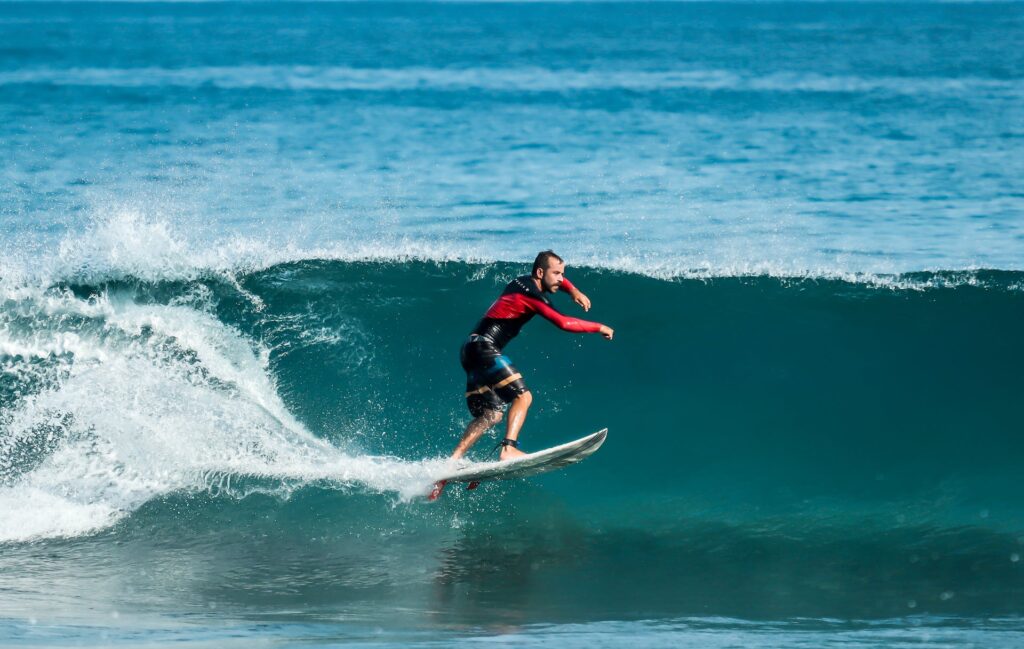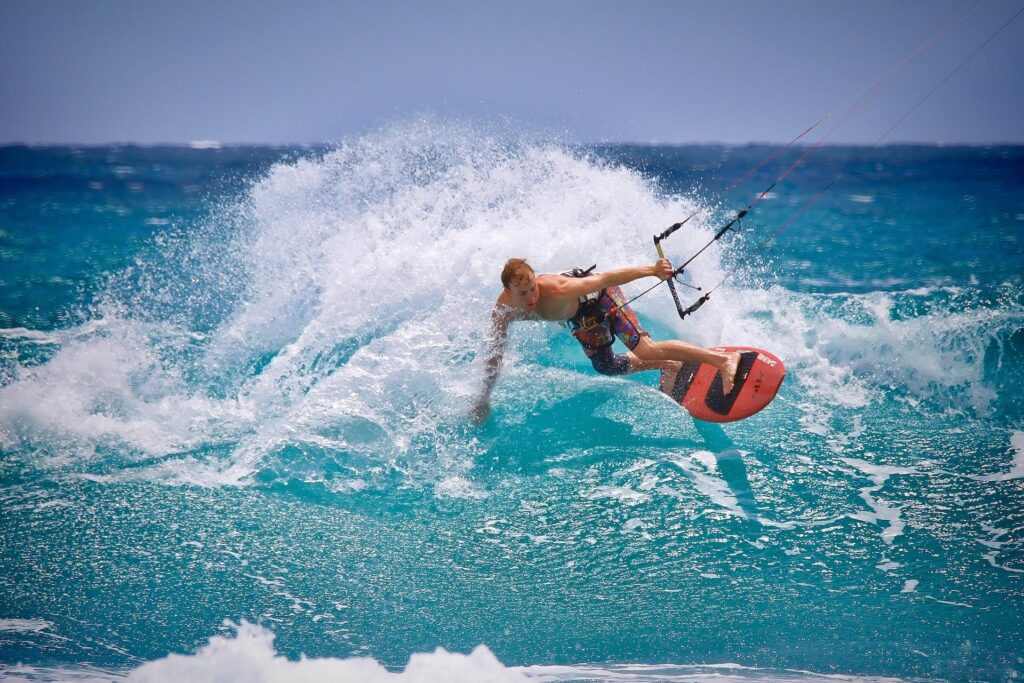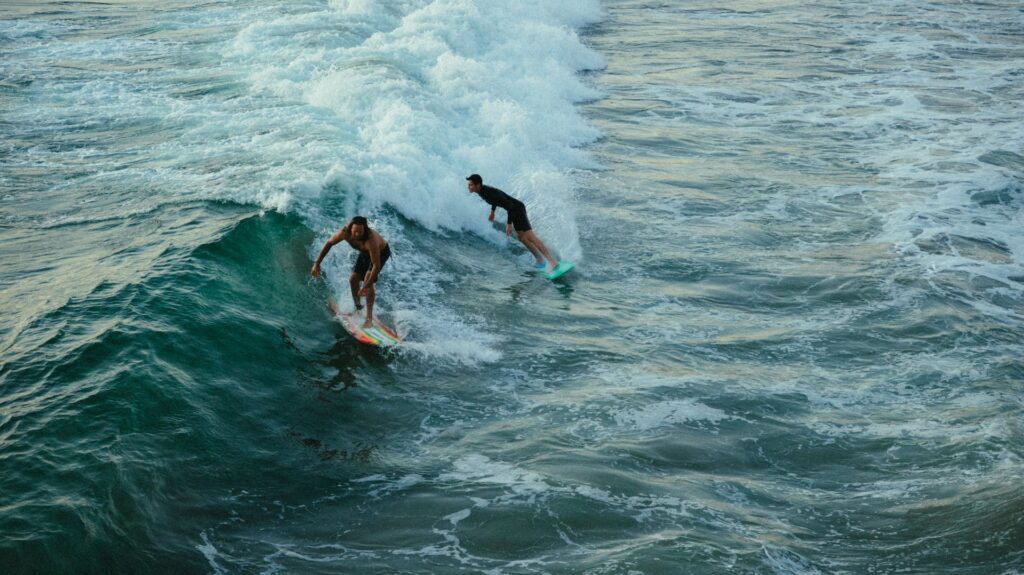What Is Snaking In Surfing?: Unveiling the Art of Snaking in Surfing
Surfing is not just about riding the waves; it’s a lifestyle, a passion, and an art form. Imagine gliding effortlessly on a shimmering wave, feeling an adrenaline rush as the water propels you forward, and relishing the enchanting dance between surfer and sea. Surfing has captured the hearts of adventure seekers and nature enthusiasts worldwide.
Mastering different techniques is essential for those who crave the thrill of gliding across the water’s surface. One such technique that has gained popularity among surfers worldwide is snaking. In this article, I will guide you through what is snaking in surfing, exploring its history, and how it’s done, its strategies, ethics, and its impact on the surfing community.
What is Snaking in Surfing?
Snaking, in surfing, refers to a strategic maneuver used by surfers to gain priority on a wave, often while paddling out. It involves skillfully positioning oneself in the most advantageous position in the lineup, granting them the right of way. While some consider snaking as cunning and opportunistic, others view it as an essential element of the competitive nature inherent in the sport.
The Origins and Evolution of Snaking

Before diving into the intricacies of snaking, let’s journey back to its origins. Snaking in surfing can be traced back to the early days of the sport when the line-up was less crowded, and surfers sought innovative ways to gain an advantage over their peers. The term “snake” refers to the twisting movement a surfer makes to bypass others in the line-up. Over time, this maneuver evolved as surf spots became more crowded, and competition intensified.
Anatomy of Snaking: Techniques and Strategies
To better understand this artful technique, let’s break down the anatomy of snaking. Snaking involves positioning oneself in front of another surfer who has the right of way, thereby effectively stealing their priority in catching the next wave. While frowned upon by many, some surfers argue that snaking is a legitimate strategy in certain circumstances. However, it requires finesse, timing, and awareness to execute without causing conflicts in the water.
Proper Conditions for Snaking
- When the surf spot is not overly crowded, snaking is generally unnecessary, and respecting the surfers with priority becomes paramount.
- Snaking can be more prevalent in more congested line-ups, where waves are consistently breaking in a particular direction.
The Snaking Sequence
- Timing is crucial. The snaker must position themselves adjacent to a surfer with priority, ensuring they can catch the next wave without interfering with others’ rides.
- By subtly paddling or positioning themselves in the ideal spot, the snaker aims to catch the attention of both the surfer ahead and potential wave opportunities.
Reading the Line-up Dynamics
- Successful snaking requires an acute understanding of the line-up dynamics, and recognizing surfers’ tendencies and optimal positions.
- Identifying patterns in wave sets and the behavior of other surfers becomes invaluable.
The Controversy and Etiquette Debate

Snaking in surfing has stirred up an ongoing debate within the surfing community. While some view it as an essential part of the sport’s competitiveness, others argue that it disrupts the harmony, camaraderie, and respect traditionally associated with surfing. Understanding the perspectives of both sides can shed light on the complexity of the issue.
Arguments in Favor of Snaking
- Proponents of snaking contend that it adds excitement, strategy, and a competitive edge to surfing, mirroring other sports’ tactics.
- They argue that snaking is justified when someone consistently fails to maximize their priority by catching waves.
The Critique Against Snaking
- Opponents argue that snaking disrupts the flow of the line-up, creates tension and aggression, and undermines the unwritten rules of surfing etiquette.
- They emphasize the significance of fairness, patience, and respect for the surfer who holds priority.
Snaking: Impact on Surfers and the Community
The influence of snaking extends beyond the individuals involved in specific encounters. Its prevalence and perception affect the overall surfing experience and community dynamics.

The Ripple Effect on Fellow Surfers
- Snaking incidents can generate frustration, and anger, and even alter the mood of the entire line-up. This negativity can affect the overall enjoyment of the sport for everyone present.
- Additionally, surfers may opt for less crowded breaks or different times to avoid instances of snaking, potentially altering established surf locations’ dynamics.
Striving for a Balanced Approach
- Striking a balance is essential in addressing snaking-related conflicts. Encouraging open dialogue, promoting education on surfing etiquette, and fostering a sense of community can help reduce negativity and tensions in the water.
Conclusion
Snaking stands as a divisive technique in the world of surfing. As we’ve explored the fundamentals, strategies, and ethics surrounding this technique, it becomes clear that snaking is a delicate dance that requires finesse, understanding, and respect.
By embracing the art of snaking while upholding the values of shared waves and camaraderie, surfers can navigate the waters gracefully, enhancing their individual experiences and the collective spirit of the surfing community. So grab your board, paddle out, and embrace the thrill of riding the waves, united by our shared love for the ocean and everything it offers.
In the dance between surfers and waves, snaking adds a touch of intrigue, turning the ride into an exhilarating battle of wits and skill.
Frequently Asked Questions
For more information on traveling and destination recommendations, check out my other articles on WanderingNotLost.org
Wanderingnotlost.org is a participant in the Amazon Services LLC Associates Program, an affiliate advertising program designed to provide a means for website owners to earn advertising fees by advertising and linking to amazon(.com, .co.uk, .ca etc) and any other website that may be affiliated with Amazon Service LLC Associates Program.As an Amazon Associate, I earn from qualifying purchases

